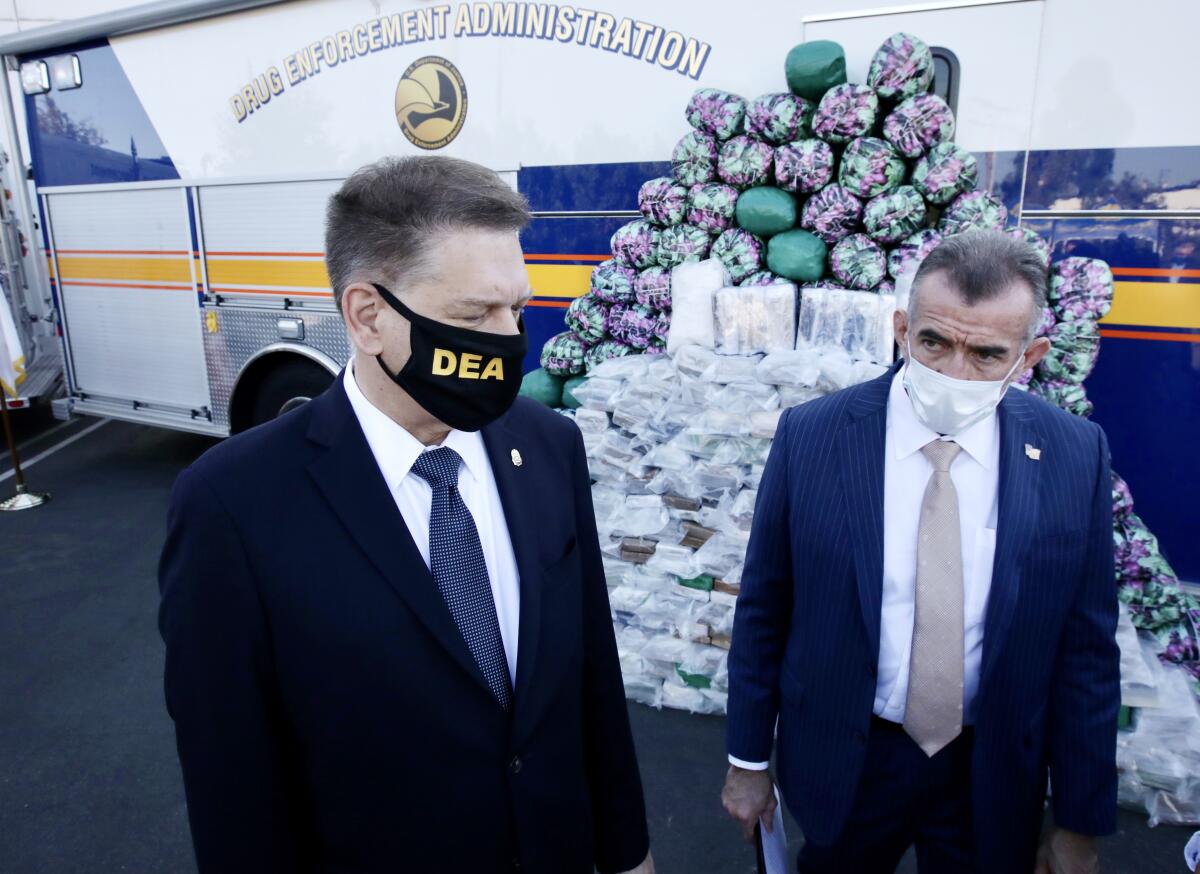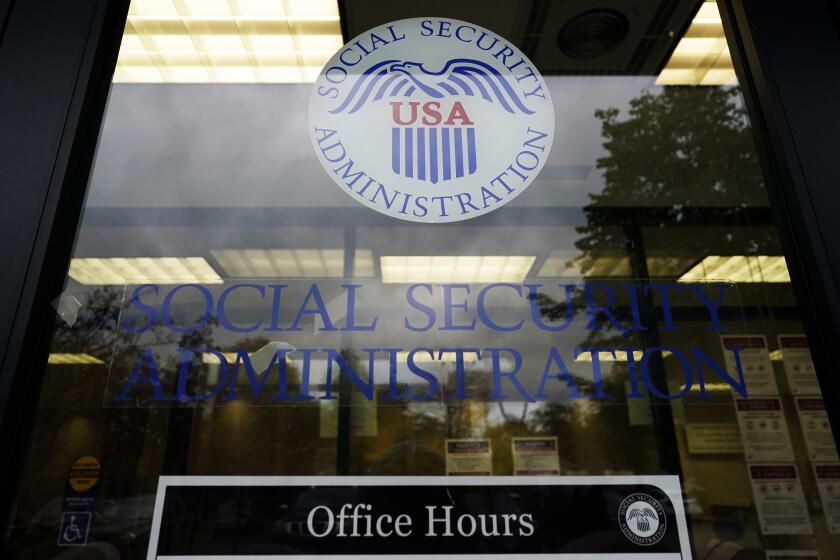Federal officials announce record meth bust in Riverside County

- Share via
The U.S. Drug Enforcement Administration announced a record-breaking bust Wednesday: roughly 2,224 pounds of methamphetamine recovered in Riverside County.
Authorities said the Oct. 2 take, which involved two locations, in Moreno Valley and Perris, represents the largest domestic seizure of the narcotic in the agency’s history.
However, another federal agency, U.S. Customs and Border Protection, netted an even bigger amount of meth the following week.
Acting on information from the DEA, CBP officials recovered more than 3,000 pounds of meth at the Otay Mesa Port of Entry in San Diego.
Authorities said it was the second-largest meth bust ever for Customs and Border Protection. The drugs seized at the location, which also included heroin and fentanyl, had a street value of about $7.2 million.
The seizures by the two agencies “are more than enough to provide a dose of meth for every man, woman and child in the United States and Mexico,” Timothy Shea, acting administrator of the DEA, said Wednesday at a warehouse in Montebello.
Behind him was a 10-foot pyramid comprised of contraband.
Officials interdicting bundles of meth, heroin and fentanyl on Friday said it was the second-largest meth bust in Customs and Border Protection history.
Authorities said they found about 893 pounds of cocaine, 13 pounds of heroin and some 650 pounds of methamphetamine in the garage of a residence in Moreno Valley. The narcotics were all packed away in approximately 25 duffle bags.
Roughly 1,600 pounds of meth were also located at a narcotics stash house in Perris, officials said.
At Otay Mesa, agents said they confiscated 64 pounds of heroin, 29 pounds of fentanyl powder and roughly 35 pounds of counterfeit pills laced with fentanyl.
Shea said the United States saw a 25% increase in meth overdoses last year alone and emphasized the drug’s damaging effects on communities, which often see an accompanying uptick in violent crimes including robberies, assaults and murders.
“Meth is an especially vicious drug,” he said. “It gradually destroys the body and mind of people who use it, and eventually it kills them.”
But officials were also careful to point out that the targets of the seizures were cartels and drug dealers, not addicts. The recently seized drugs stemmed from the Sinaloa and Jalisco New Generation cartels in Mexico, Shea said.
Had they not been seized, the drugs would have infiltrated Los Angeles within a day, according to Bill Bodner, special agent in charge of the DEA’s Los Angeles Division.
“Traditionally, L.A. is the transportation hub,” he said, noting that the city is north of many immigration checkpoints and is home to four airports, numerous freeways and countless package distribution centers. “That’s why traffickers prefer to get the drugs here.”
Shea said he believed, anecdotally, that there had been an uptick in meth use and overdoses during the COVID-19 pandemic.
“This is a tough time for everybody, and some people turn to drugs to deal with that,” he said, adding that many in-house-treatment options have been curtailed due to the coronavirus.
The massive methamphetamine seizure was part of Operation Crystal Shield, a nationwide effort the DEA launched in February. More than 70 investigators worked the two California cases, which included extensive fieldwork and surveillance.
Operation Crystal Shield has resulted in 2,800 arrests over the last six months nationwide, Bodner said. No charges have yet been filed in the latest seizures, although authorities said cases would likely be prosecuted in both California and Washington, D.C.
“Today’s seizure sends a message loud and clear,” Shea said Wednesday. “This is real proof of a job well done.”
More to Read
Sign up for Essential California
The most important California stories and recommendations in your inbox every morning.
You may occasionally receive promotional content from the Los Angeles Times.












